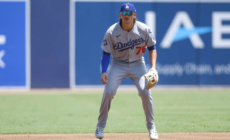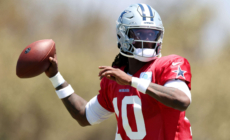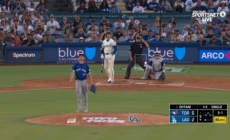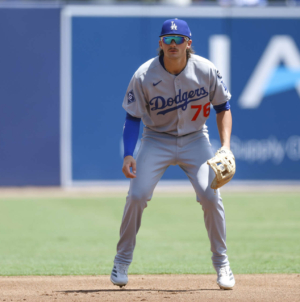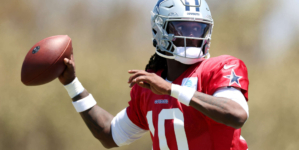-
Dodgers Predicted To Demote Top Infield Prospect In Coming Days - 11 mins ago
-
Rockies vs. Diamondback Highlights | MLB on FOX - 48 mins ago
-
Dallas Cowboys Coach Addresses Injury to Joe Milton - 50 mins ago
-
Jelly Roll reveals 200-pound weight loss milestone achievement - about 1 hour ago
-
How to Watch Chicago Sky vs Indiana Fever: Live Stream WNBA, TV Channel - about 1 hour ago
-
Cubs vs. Cardinals Highlights | MLB on FOX - 2 hours ago
-
‘World’s Ugliest Dog’ Contest Crowns New Winner - 2 hours ago
-
Shohei Ohtani belts 40th home run of season, Dodgers’ extend lead vs. Blue Jays - 2 hours ago
-
Warriors Receive Major Trade Update for the Future - 3 hours ago
-
Royals vs. Twins Highlights | MLB on FOX - 3 hours ago
Scientists Reveal How to Dance Like a Cockatoo
A study exploring dance behaviors in captive cockatoos has found that these birds have an impressive repertoire of 30 distinct moves—and some are even able to make their own choreographs by combining them.
The researchers, led by Natasha Lubke from Charles Sturt University in Australia, analyzed 45 videos posted on social media and documented multiple different moves ranging from headbanging to sidesteps, foot taps and body rolls.
About 17 of these dancing behaviors had never before been described in scientific literature. Surprisingly, closely related species did not display more similar dances than others, and each species had a unique top 10 most common dance moves.
The study also examined six cockatoos from the Wagga Wagga zoo in Australia, pairing them with birds of the opposite sex, and exposing them to different settings including music, podcasts and silence. The birds danced regardless of the background.
Some of the most commonly identified moves—which are depicted below—include downward bending, foot lifting, fluffing feathers and turning around.
Lubke et al., 2025, PLOS One, CC-BY 4.0 https://creativecommons.org/licenses/by/4.0/
The findings of the stufy suggest that cockatoo’s dancing may not entirely be dependent on musical stimuli. Moreover, motivation to interact with the other sex may have overridden any attention or response to the music.
Dancing behaviors are present in at least 10 out of 21 species of cockatoo—and many of their moves are similar to the courtship displays of wild parrots. This suggests that their dancing may have originated as courtship behavior that has been redirected towards their owners.
The study also notes that dance behavior might fit the definition of play, as it is initiated voluntarily by the birds, and it appears to be intrinsically rewarding. This means that music might actually serve as enrichment for them.
“As well as supporting the presence of positive emotions in birds and advancing dance behavior as an excellent model to study parrot emotions, the work suggests that playing music to parrots may provide a useful approach to enrich their lives in captivity, with positive effects on their welfare,” Lubke said in a statement.
However, paper coauthor professor Rafael Freire added that further research is necessary to determine whether or not music can actually trigger dance in captive birds and serve as a form of environmental enrichment.
Do you have a tip on a science story that Newsweek should be covering? Do you have a question about cockatoos? Let us know via science@newsweek.com.
Reference
Lubke, N., Held, S. D., Massaro, M., & Freire, R. (2025). Dance behaviour in cockatoos: Implications for cognitive processes and welfare. PLoS ONE, 20(8). https://doi.org/10.1371/journal.pone.0328487
Source link
